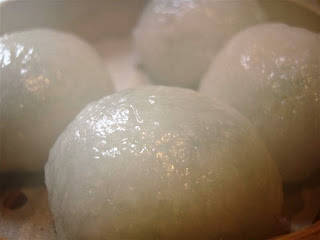Saturday, April 30, 2011
Charcoal Bamboo Roll
Charcoal Bamboo Roll from Breadtop. Absolutely delicious and no charcoal taste. It is flavoured with butter and garlic. A must try with your eyes closed!
Saturday, April 9, 2011
Hung Cheung Chinese Seafood Restaurant
338 Marrickville Road,
Marrickville, NSW, 2204
Ph. (02) 9560 4681
Hours: Open 7 days, 9am - 11pm
Hung Cheung certainly does do one of the best Yum Cha's in Sydney and it's no secret. Pop in on a weekend and expect lots of hustle and bustle. Grab a ticket inside and join the queue, the short wait is certainly worth it!
Some of our favourites include:

Marrickville, NSW, 2204
Ph. (02) 9560 4681
Hours: Open 7 days, 9am - 11pm
Hung Cheung certainly does do one of the best Yum Cha's in Sydney and it's no secret. Pop in on a weekend and expect lots of hustle and bustle. Grab a ticket inside and join the queue, the short wait is certainly worth it!
Hung Cheung is a seafood restaurant so the Yum Cha is more seafood orientated, however there is a great variety of other meals on offer.
Some of our favourites include:
Chicken's Feet
Chilli Tripe
Pork Ribs
Snow Pea & Prawn Dumplings
Ginger Tripe
Egg Custard Tart
Some of the other dishes on offer include:
- Dumplings: Spinach / Garlic Chive / Seafood Combination / Prawn
- Salt & Pepper White Bait
- Salt & Pepper Calamari
- Salt & Pepper Lobster
- Singapore Noodles
- Prawn Noodles
- Blood Jelly
- Sticky Rice
- Pork Buns
- Mango Pancakes
What sets this Yum Cha restaurant from the rest is its use of fresh ingredients. The dumplings are made fresh on site and there certainly is a large turnover of food.
Don't expect the decor of a hatted restaurant. The restaurant has recently undergone some modest renovations but could certainly do with some more loving attention.
Each of the dishes are priced based on their size. Small $4.20, Medium $4.80 and Large $5.80. Other dishes, such as their 'Specials' are around $7 - $9. Expect to pay around $15 - $20/head.
The service here is quite friendly. Should you not see the Yum Cha dish you are after or should you wish to order from the menu, don't be shy, grab a waiter and they will happily see to your request. They also have alcoholic beverages on the menu and the option to B.Y.O.
This place is great for weekend family lunches, noisy kids and those recovering from the night before. Expect nothing less than fast, tasty and great food. The dinner option of a la carte is also definitely worth a try.

Saturday, April 2, 2011
Honey Harvesting
Our honey harvest this year was quite successful with our pleasant non-aggressive honey bees producing 80 kilograms of honey, that's a whopping 40 litres. We made an early start on an ideal hot dry day to gather, extract, filter and jar the honey. The process took us around 5 hours in total.
We began by preparing our replacement frames and foundation. Preparation and having everything in order is key to a successful honey harvest. Next, we prepared the extraction area, fired up the smoker and kitted ourselves up in our protective clothing.
The Smoker using dry Heshen
Worker Bees at the entrance of the hive
Inside the hive
From the side, we then removed the weather proofed lid and carefully removed the internal cover to expose the hive. Gently, smoke was blown across the tops of the honey filled frames whilst we made sure not to directly blow smoke into the hive.
Blowing smoke across the honey filled frames
Carefully, we removed frame by frame using the hook end of the hive tool. Next, we gently brushed the bees off with a feather and placed the frames into a covered storage box.
Honey filled frames and the hive tool
Brushing the bees off
Storing the loot
Once all of the frames had been removed from the hive and replaced with new frames, it was time to extract the honey. In a pot of very hot water we immersed the de-capping knife. This is the tool which removes the caps of the cells that have been filled with honey. Running the blade horizontally we de-capped the cells to release the honey.
Capped honey cells
De-capping
Two de-capped frames were then placed into the extractor and spun gently at one handle revolution per second. Honey began to splatter on to the walls of the extractor and gather at the base of the drum. Next, the frames were rotated and spun on the other side to release as much honey as possible from the frames.
Extracting the honey
After all of the honey was extracted, we sieved the wax from the honey and ladled the honey into sterilised jars.
Passing the honey through the sieve
Jarring
The final result, golden honey on hot freshly baked bread. Heavenly and definitely worth all of the effort.
The final product
Subscribe to:
Posts (Atom)























